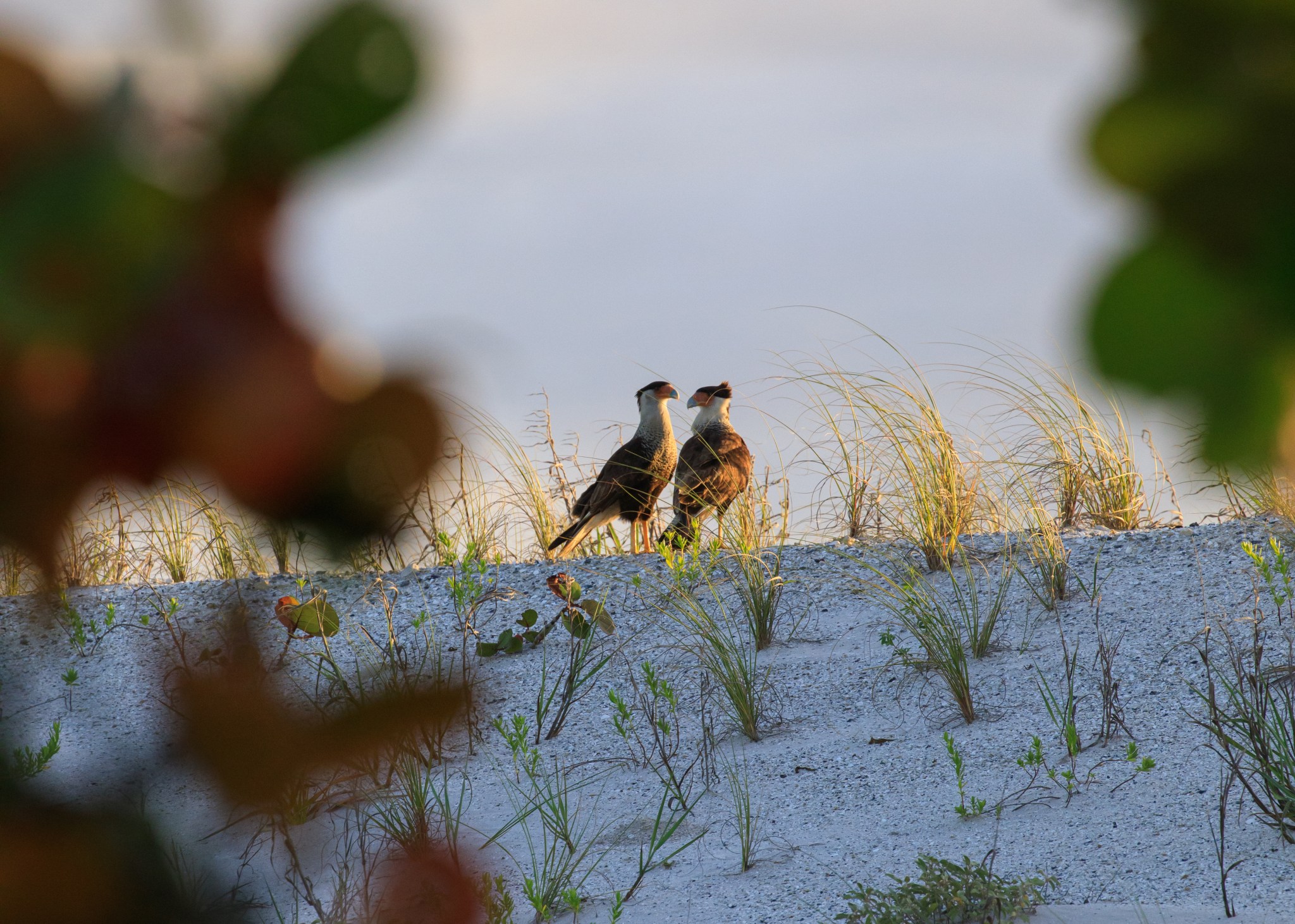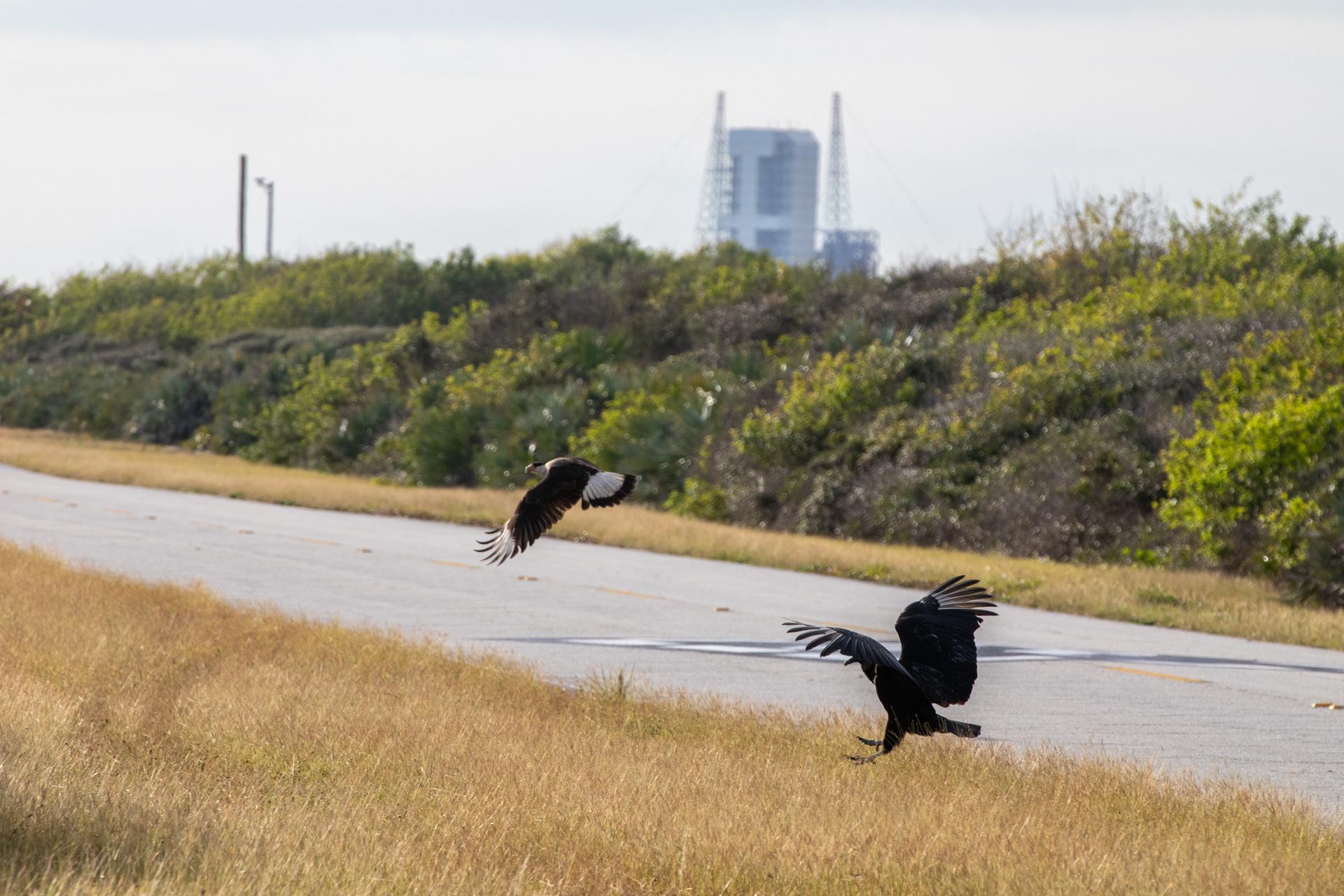By Jason Costa
NASA’s Kennedy Space Center
Sharing a border with the Merritt Island National Wildlife Refuge, NASA’s Kennedy Space Center in Florida is home to more than 330 bird species. But spotting a crested caracara on the spaceport’s 140,000 acres of land, water, and marshes is a rare event. With the recent sighting of two adult crested caracaras together on some newly refurbished dunes of the spaceport, Rebecca Bolt, wildlife ecologist at Kennedy, offers a closer look at these threatened birds.
What is a crested caracara?
The crested caracara (Caracara cheriway) is a large falcon that behaves like a vulture. Adults have bright orange faces and legs, and they spend much time perched on tall structures, making them easy to see and recognize.
Where can the crested caracara be found? Are they migratory?
Caracaras do not migrate. They are found in Arizona, Texas, and Louisiana south into Mexico, Central America, South America, and the Caribbean. An isolated population makes its home in south central Florida. During the past decade, occasional sightings of non-nesting caracaras have become more common farther north, even into Canada. Caracaras nest and hunt in open areas with scattered trees such as grasslands, deserts, and scrub. They also will concentrate near landfills, slaughterhouses, and hen houses that are sources of food.
Why would spotting a pair of crested caracaras together at Kennedy be noteworthy?
The caracara pair recently spotted was seen on the newly built dune east of the Launch Complex 39 area in May 2021. Seeing one bird would be interesting enough, but seeing a pair so shortly after the breeding season, which is typically September through April, may indicate the caracara range is moving northward.
What does the crested caracara eat?
The caracara’s primary food source is dead animals that they find by flying low and slow. They also eat a variety of live prey including insects, fish, amphibians, reptiles, birds, and mammals; they are adept at running on the ground to catch their food. Caracaras have been seen digging up turtle eggs from nests and overturning manure piles to find insects. They will eat just about anything they can get their long, sharp talons on!
Do they build nests?
Males and females gather stems, vines, and sticks that they weave into a 2-foot diameter nest in the tallest tree or other structure they can find. The nest takes two to four weeks to build. Like bald eagles, they will reuse and refurbish their old nest, so it grows in size through the years. Crested caracaras share other traits with bald eagles: they keep the same mate for several years, average 2-3 young per year, and share in the raising of their young.
When were crested caracaras first seen at Kennedy and about how many are on center?
Caracaras have been seen flying over Kennedy for many years, but these sightings are very rare. As far as we know, there are no resident birds or nests on Kennedy.
What is the listing status of the crested caracara? What are some of the threats facing the birds?
Caracaras are federally protected under the Endangered Species Act as a threatened species. The primary threat is loss of suitable foraging and nesting habitat caused by development. Specific management to keep the habitat open and accessible for the birds to hunt is also necessary. Road mortality accounts for many caracara deaths, particularly of young fledgling birds.
How can I help the crested caracara?
Driving carefully is a great, simple way to help caracaras as well as many other species of vulnerable wildlife. Not only does careful driving reduce direct mortality, it diminishes the number of dead animals on the road that can attract a caracara searching for a food source. Also, being a proponent of responsible development that considers natural resources improves the chances for caracaras and other wildlife to be around for future generations to enjoy.

























